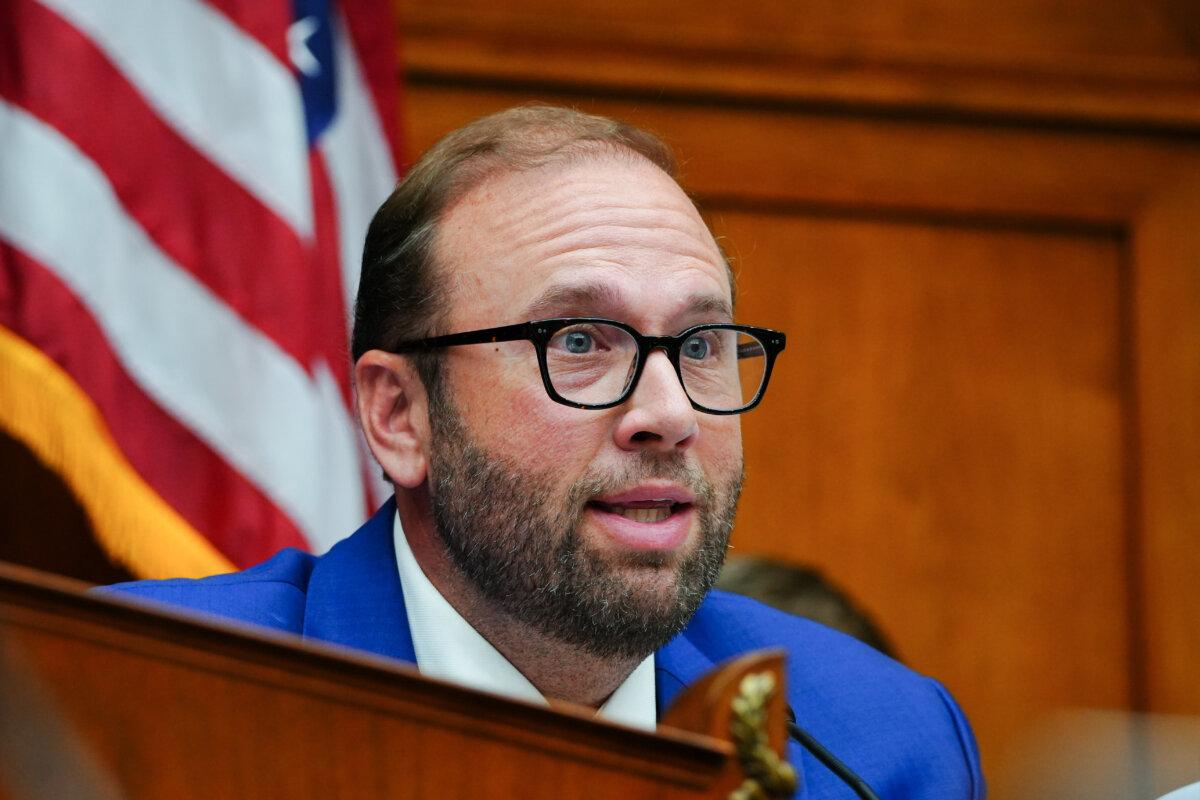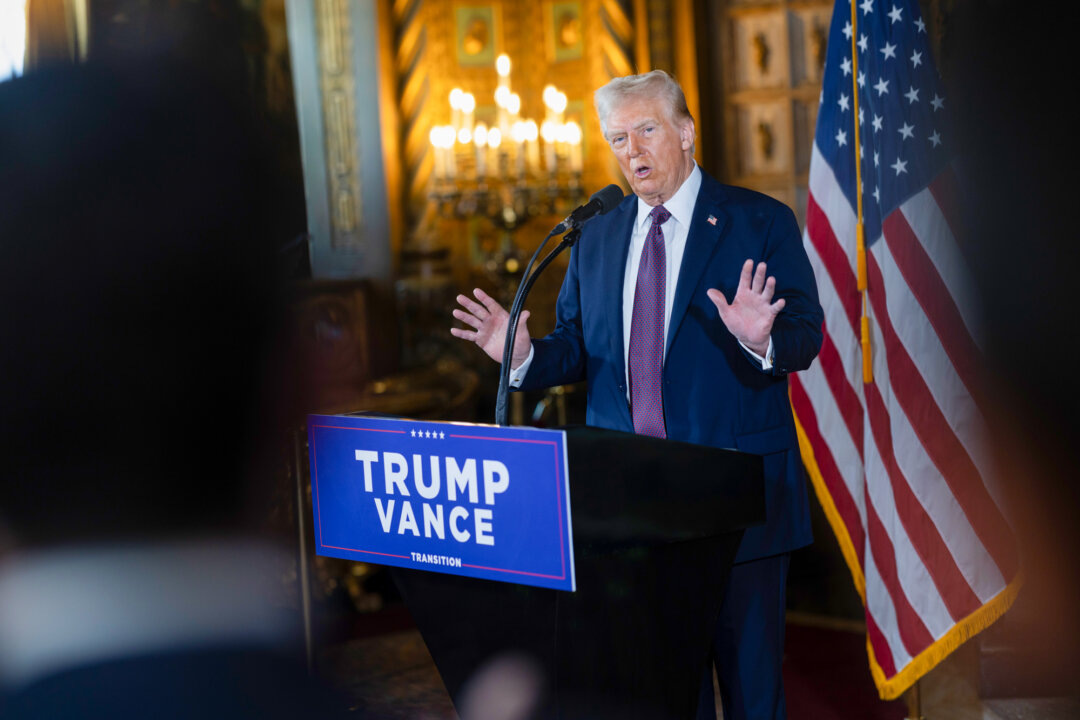Senate Finance Committee Chairman Mike Crap (R-Idaho) calls extension of Trump tax cuts an ‘investment in America.’
A new study has concluded that the United States could risk a $1 trillion hit to the economy if Congress fails to extend the 2017 Tax Cuts and Jobs Act (TCJA).
According to the National Association of Manufacturers (NAM), not renewing President-elect Donald Trump’s tax reforms will cost the economy about six million jobs and $540 billion in lost wages.
Without an extension of the Trump-era tax cuts, the economic damage would total a $1.1 trillion hit to the GDP.
Jay Timmons, the president and CEO of NAM, says the manufacturing sector would also be harmed if lawmakers do not renew the TCJA.
The study determined that 1.137 million manufacturing jobs and $126 billion in worker compensation would be erased, reducing the manufacturing GDP by $284 billion.
“This data—six million American jobs at stake—makes crystal clear that preserving tax reform should be one of the first acts of the new Congress and the new administration,” Timmons said in a statement.
“If Congress delays, manufacturers will be forced to delay investment and job creation decisions due to the uncertain outlook.”
Lawmakers touted the study’s findings and stressed the importance of keeping the TCJA intact.
Sen. Mike Crapo (R-Idaho), the chairman of the Senate Finance Committee, told a Jan. 14 news conference that the TCJA was a crucial piece of legislation that prevented companies from fleeing the United States and raised federal revenues.
While various tax organizations and economists warned that the TCJA would lower tax receipts, federal revenues are close to record highs, reaching $4.9 trillion in the last fiscal year—$1.6 trillion higher than when the TCJA was instituted.
Despite concerns that keeping the tax law intact would reduce revenues and exacerbate the budget deficit, Crapo noted that tax provisions would bolster capital growth and serve as an “investment in America.”
“It’s because of the people who put this study together, our manufacturing, our workers, our small businesses, and those others in our country who believe that the way to make us strong is to build a strong, powerful economy, and not to simply keep piling taxes on taxes on taxes on top of our people,” Crapo said.
House Ways and Means Committee Chairman Jason Smith (R-Mo.) expressed that the Trump tax cuts must be extended this year as soon as possible.
“Congress cannot delay,” Smith told reporters. “Small businesses and manufacturers have to plan today for what their future might hold. Any inaction only leads to complications, slowdowns, and uncertainty.”

Democrat lawmakers disagree.
At a Jan. 14 House Ways and Means Committee hearing, Rep. Richard Neal (D-Mass.), the committee’s ranking member, stated that extending the tax cuts would primarily benefit the wealthy, calling it a “cash grab.”
“We had the opportunity here to address the national debt and tax relief for middle-class Americans and people at the lower end of the scale, but that was not what was entertained,” Neal said. “So we’re talking now about adding $4.6 trillion to the deficit as part of their mandate.”The conclusions of the NAM report——that the TCJA would stimulate the economy—are supported by several other recent analyses.
The Joint Committee on Taxation recently determined that permanently extending the TCJA individual tax provisions would boost the GDP during the 2025-2034 budget window by 0.9 percent.
This past summer, the Tax Foundation projected that if the TCJA were permanent, the GDP would climb between 0.6 and 0.7 percent, and the number of full-time jobs would surge by 800,000 over the next 10 years.
“We estimate an initial GDP boost of 0.7 percent in 2026 that falls to 0.6 percent by the end of the budget window, which is driven by lower tax rates increasing labor supply offset over time by less capital formation mainly because of the cap on state and local tax deductions,” said William McBride, the chief economist at the Tax Foundation.
At the same time, other assessments have published different findings and emphasized concerns surrounding the national debt and budget deficits.
The Congressional Budget Office (CBO), a nonpartisan budget watchdog, noted last month that allowing the 2017 tax cuts to expire would benefit the broader economy in the long term.
Researchers say expiring provisions would help plug the federal shortfall by raising revenues. While higher marginal tax rates would affect growth over the next few years, lower deficits would bolster growth prospects after 2029 because less borrowing can increase private investment.
The CBO describes this as a crowd-out effect.
“Increases in federal budget deficits affect the economy in the long run by reducing national saving (the total amount of saving by households, businesses, and governments) and hence the funds that are available for private investment in productive capital,” the CBO wrote in a 2014 working paper.
“Deficits thus ‘crowd out’ private domestic investment in the long run.”
The Committee for a Responsible Federal Budget, an independent policy organization, believes that extending the TCJA would unlikely stimulate the economy enough to cover the deficit impact.
“Tax cuts generally do not pay for themselves,” the report stated. “It is therefore critical that policymakers fully offset the revenue loss from extension in order to ensure it will not add to the already unsustainable national debt.”
The U.S. government registered a $1.8 trillion budget deficit in fiscal year 2024 and borrowed $711 billion in the first three months of fiscal year 2025.
The national debt stands above $36.1 trillion.

